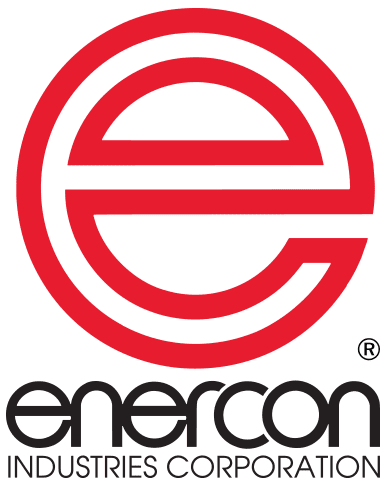Choosing the Best Surface Treatment Technology: Plasma vs. Flame
Surface treatment technologies, including plasma and flame, play a pivotal role in enhancing adhesion, improving surface energy, and enabling efficient and repeatable manufacturing processes. Choosing between these technologies depends on the materials being treated, application speed, and system integration. In this guide, we’ll break down the key differences, benefits, and practical considerations to help you identify the optimal technology for your needs.
What is Plasma?
Solids, liquids and gases are the states of matter most people are familiar with. However, the fourth state of matter, plasma, is the most common form of matter in the universe. Examples of plasma in nature include lightning and the northern lights.
Plasma is generated by ionizing gases to create a mixture of free radicals, electrons, and UV light. As you see in the illustration, there are several types of atmospheric plasma including corona, flame, blown-ion and blown-arc plasmas. (That’s right – technically corona and flame are forms of plasma.)

Air plasmas, like corona, blown-ion and blown-arc, rely on atmospheric air, with blown-ion and blown-arc plasmas using a compressed air source.
Blown-ion air plasma pushes pressurized air past a single electrode which discharges inside the treater head. The electrode creates positively charged ions in the surrounding air particles. The air pressure then forces the air particles to accelerate off the tip of the head as a high velocity stream of charged ions are directed toward the object’s surface.
Blown-arc air plasma is formed when atmospheric air is blown past two high-voltage power electrodes. The electrical discharge positively charges the ion particles. Some people refer to blown-arc plasma as a corona. The term corona is most widely used when describing surface treatment used for films for converting and extruding. This article focuses on the treatment of dimensional objects.
Flame plasmas are created when a hydrocarbon gas and atmospheric air are combined. Flame treaters use natural gas or propane as the fuel source.
Why Plasma & Flame are Used to Improve Adhesion
Manufacturers, such as Enercon, build surface treaters which produce consistent and repeatable plasmas to activate surfaces for improved adhesion. The three primary effects plasma & flame have on a surface are cleaning, etching, and functionalizing.
- Cleaning: Plasma treatment removes surface contaminants, including dust, oils, and organics. This ensures better adhesion for subsequent processes.
- Etching: By micro-etching at a nanometer scale, plasma increases the surface area, enhancing bonding potential.
- Functionalization: Plasma introduces polar groups to the surface, raising surface energy and improving adhesion.
The net result of plasma surface preparation is the promotion and enablement of high-quality bonding with inks, coatings, and adhesives.
Which Treatment Technology is Best?
As seen in the chart below, both plasma and flame are effective on a wide range of materials. So, in most cases either technology may be capable of successfully treating the material.
| Untreated | Blown-ion™ Plasma Treatment | Flame Plasma Treatment | ||||||||||
| Dyne | CA | Polarity | SFE | Dyne | CA | Polarity | SFE | Dyne | CA | Polarity | SFE | |
| PP | >30 | 94.35 | 1.55 | 29.62 | 58 | 47.83 | 20.6 | 57.6 | 70 | 38.59 | 9.5 | 44.64 |
| PE | >30 | 114.9 | 0.28 | 28.69 | 60 | 45.28 | 21.41 | 59.9 | 56 | 52.22 | 16.94 | 56.34 |
| PS | 31 | 91.5 | 0.62 | 41.37 | 70 | 24.75 | 32.37 | 70.48 | 48 | 69.08 | 7.69 | 47.87 |
| PA6 | 34 | 74.21 | 6.92 | 41.66 | 66 | 41.81 | 21.89 | 63.5 | 54 | 55.45 | 15.75 | 53.54 |
| PA66 | 36 | 67.63 | 8.08 | 49.24 | 70 | 35.79 | 27.67 | 64.57 | 70 | 31.7 | 17.78 | 55.95 |
| PET | >30 | 114.9 | 0.28 | 28.69 | 70 | 38.17 | 27.65 | 62.26 | 44 | 80.99 | 5.15 | 35.91 |
The goal of treatment, the area to be treated, and how it will be integrated will ultimately determine which solution is best for your operation.
Let’s start with two quick technology disqualifiers.
- If your material is conductive, blown-arc is not an option.
- If your material is sensitive to heat, flame may not be an option unless you run at very high speeds.
Goal of Treatment
In most cases, the ink, coating or adhesive supplier will provide a desired surface energy for best results. Refer to the first line of the chart above to see that polypropylene (PP) may reach a dyne level of 58 with a blown-ion plasma treater. This may be more than adequate for the application. However, if a higher surface energy is needed, flame would be the preferred option since it can reach a dyne level of 70.
If both plasma and flame will provide the surface energy changes required, the technology qualification process is moved to the application details. This includes the area requiring treatment (including size and geometry), the processing speed and how the surface treater will be integrated into a production environment.
Flame-Favorable Applications
For large areas, flame treaters are often the best choice because they can be built to virtually any width and cover large areas in a single pass. Garage doors and automotive dashboards are good examples of where flame treatment is ideal for treating large surface areas.
Flame treatment is particularly effective for surfaces with complex geometries. While blown-ion plasma systems can also treat such surfaces, flame treatment provides a distinct advantage. It requires less precise control over the distance between the treatment system and the surface, making it more adaptable and efficient for irregularly shaped parts. Examples of complex geometries include:
- Car dashboards
- Bottles/cups with irregular shapes (like wine & soft drink bottles, or large tumblers)
- Molded parts
- Doors with decorative areas
Specialty Flame Burners
Traditionally all flame treatment heads were rectangular. New designs for treatment heads increased the applications where flame can be used. Round treatment burners are ideal for following precise treatment patterns, such as outlining the outer areas of a part. The round burner minimizes the number of areas that might be passed over more than once. Pencil-style burners are used when treating very narrow and specific areas, and new angle burners are able to treat multiple dimensions at the same time.
Plasma-Favorable Applications
Because the temperature of a blown-ion and blown-arc plasma is significantly less than a flame plasma, these plasmas are ideal for heat-sensitive materials and slower operating speeds. Moreover, they do not require an additional consumable fuel source; so, operating costs are lower.
Traditional blown-ion plasmas are limited to covering treatment areas of a half inch in a single pass. New treatment head designs have now expanded the width of treatment covered in a single pass. A multiport design enables treatment two inches and wider in a single pass. Multiple treatment heads can be specified to increase the area being treated. New, angled blown-ion plasma treater heads are now available to for difficult-to-reach surfaces.
Integrating Flame & Plasma Surface Treatment
The final piece of the technology decision relates to how the equipment will be integrated into your operation. Will the product be presented to a fixed position treatment head? Will the treatment head be integrated into an indexing or robotic system? What is the available dwell time or speed of processing required? All of these factors may help influence the decision on which technology to use.

Where to begin?
The first step in evaluating plasma and flame surface treating technologies is conducting a lab or field trial. With a lab trial, extensive testing can be done comparing technology results and how long treatment will last. Field trials provide the added benefit of testing treated surfaces by running them through a production line. Enercon is in a unique position to help you evaluate these technologies as we offer a full range of plasma and flame treaters.
Conclusion
Both plasma and flame are winning technologies that can make an impact on any adhesion-based decorating or assembly application. Replacing manual surface preparations eliminates human error and allows operations to focus their employees on higher value tasks. Plasma and flame surface treatment can be used to eliminate laborious and messy mechanical surface roughing processes, and the use of hazardous primers. Manufacturers who invest in plasma or flame surface treating find tremendous benefits in quality, consistency, and throughput.
For more information on plasma surface treating and flame surface treatment, contact the experts at Enercon Industries Corporation.
This article was first published in Plastics Decorating.

